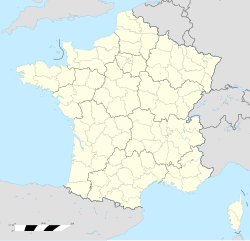| Fort de Romainville | |
|---|---|
| Transit camp | |
 Entrance archway | |
| Coordinates | 48°53′06″N2°25′22″E / 48.885126°N 2.422718°E |
| Location | Les Lilas, Île-de-France Occupied France |
| Built by | Second French Republic |
| Operated by | SS |
| Commandant | Bickenbach |
| Original use | Military fort for the protection of Paris |
| First built | 1844–48 |
| Operational | October 1940 – 19 August 1944 |
| Inmates | French Resistance, French communists |
| Killed | 152 |
| Notable inmates | Pierre Georges, Danielle Casanova, Marie-Claude Vaillant-Couturier, Hélène Solomon-Langevin, Charlotte Delbo, Eddie Chapman |

Fort de Romainville, (in English, Fort Romainville) was built in France in the 1830s [1] and was used as a Nazi concentration camp in World War II.



